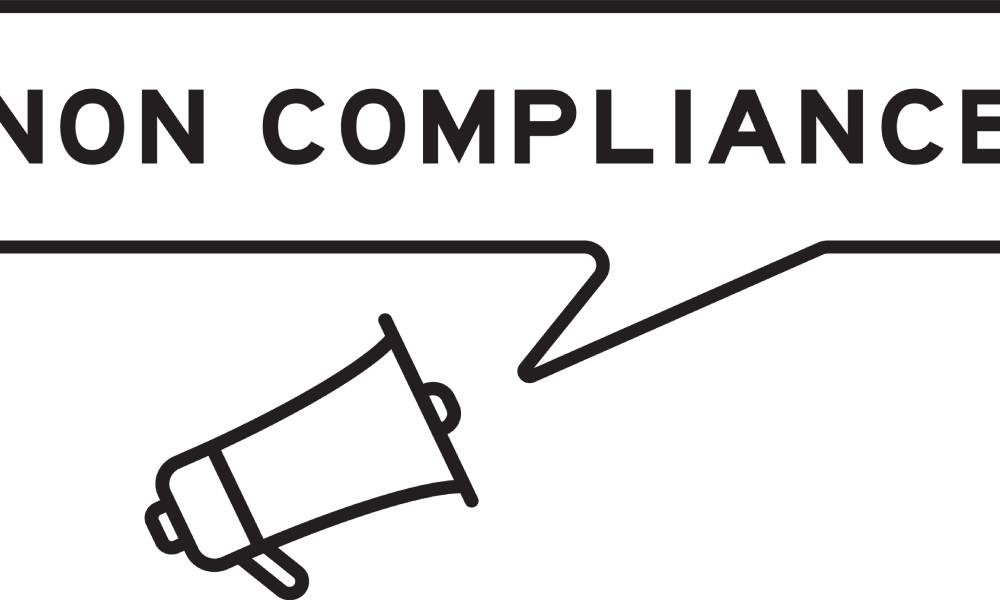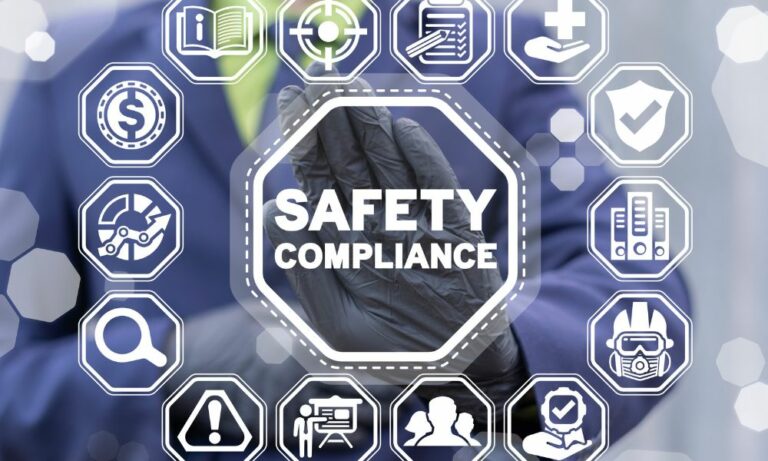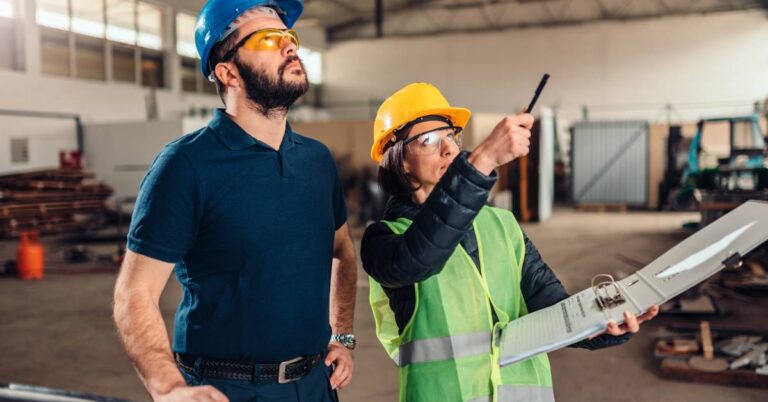Safety is critical in many industrial industries. Contractors must adhere to stringent regulations to protect workers, clients, and the public. Non-compliance with these regulations can have severe consequences. This blog post will explore what safety regulation non-compliance is, its importance, common examples, how to identify and prevent it, and the role of technology in ensuring compliance. There’s a lot to discuss, so let’s get started.
Introduction to Safety Regulation Non-Compliance
Safety regulation non-compliance occurs when construction businesses fail to adhere to established safety standards and laws. Governing bodies put these regulations in place to mitigate risks and ensure the well-being of everyone on a construction site. Non-compliance can lead to accidents, legal penalties, and even loss of business.
The Importance of Understanding Non-Compliance
Contractors must understand what safety regulation non-compliance is because it directly impacts their operations. Compliance ensures a safe working environment, reduces the risk of accidents, and protects the company from legal issues. Non-compliance can result in fines, project delays, and damage to reputation. Therefore, staying compliant is not just a legal obligation but a strategic business practice.
Examples and Consequences of Non-Compliance

Falling short on safety regulation compliance can have dire repercussions. Contractors must be acutely aware of the various forms of non-compliance to avoid these pitfalls. This section will explore the most frequent violations observed in the construction industry and the serious consequences they can trigger. Each example is a stark reminder of the importance of upholding rigorous safety standards, from overlooked safety gear to ignored training requirements. Understanding these examples is essential for mitigating risks and ensuring your business’s longevity and success.
Common Examples
- Lack of proper safety training: Workers lack adequate safety protocol training.
- Insufficient personal protective equipment (PPE): Failing to provide appropriate PPE like helmets, gloves, and safety glasses.
- Ignoring safety inspections: Skipping regular safety inspections or failing to address identified hazards.
- Unsafe working conditions: Allowing hazardous conditions, such as exposed electrical wiring or unstable scaffolding, to persist.
- Improper documentation: Not maintaining accurate safety training records, incidents, and inspections.
Consequences
- Increased accidents and injuries: Non-compliance significantly increases workplace accidents and injuries.
- Legal penalties: Regulatory bodies can impose fines and sanctions on non-compliant companies.
- Project delays: Accidents and legal issues can lead to project halts and delays.
- Reputation damage: Non-compliance can tarnish a company’s reputation, making it harder to secure future projects.
- Financial losses: The combined effect of fines, legal fees, and project delays can lead to substantial financial losses.
Identifying and Preventing Non-Compliance
Ensuring safety compliance on construction sites is not just about obeying regulations—it’s about fostering a culture of safety that protects your workforce and your business. Identifying and preventing non-compliance requires a proactive approach, encompassing regular audits, employee training, and integrating advanced technologies.
This section will guide you through the strategies and best practices essential for maintaining compliance, ultimately safeguarding your projects from the risks and repercussions of safety regulation breaches. You enhance operational efficiency and build trust and reliability with your clients and stakeholders by prioritizing compliance.
Identification
- Regular audits: Conduct frequent safety audits to ensure regulation compliance.
- Safety checklists: Use comprehensive safety checklists to identify potential hazards.
- Employee feedback: Encourage workers to report safety concerns and potential hazards.
- Monitoring and reporting: Implement a robust system for monitoring and reporting safety incidents.
Prevention
- Safety training programs: Invest in regular and comprehensive employee safety training.
- Proper PPE: Ensure all workers can access and use the necessary PPE.
- Frequent inspections: Schedule regular safety inspections and promptly address any issues found.
- Accurate documentation: Maintain detailed records of all safety training, incidents, inspections, and corrective actions.
- Safety culture: Foster a culture of safety where every worker understands the importance of compliance and feels responsible for maintaining a safe work environment.
Technology’s Role in Ensuring Safety Regulation Compliance

Staying compliant with safety regulations can be challenging in the fast-paced construction industry. However, technology offers revolutionary solutions to simplify and enhance compliance efforts. You’ll discover sophisticated software that tracks safety training and incidents and wearable technology that monitors worker health. The integration of modern technology is transforming how construction companies manage safety.
This section will explore the various technological tools at your disposal, demonstrating how leveraging these innovations can streamline compliance and create a safer, more efficient work environment. Embracing technology is no longer optional. It is critical to sustaining your competitive edge while ensuring the highest safety standards.
Safety Management Software
Safety management software can streamline compliance efforts by providing tools for tracking safety training, incidents, and inspections. These platforms often include features like automated reminders for upcoming training sessions and inspection schedules, ensuring nothing falls through the cracks.
Wearable Technology
Wearable devices equipped with sensors can monitor the environmental conditions and the workers’ vital signs in real-time. This technology can alert workers and supervisors to potential hazards, such as high temperatures or dangerous levels of toxic gases, allowing for immediate action to prevent accidents.
Drones
Drones can conduct aerial inspections of construction sites, identifying potential hazards that may not be visible from the ground. They can also monitor compliance with safety regulations, such as ensuring workers use PPE and follow proper safety protocols.
Mobile Apps
Mobile apps can provide workers with easy access to safety information, checklists, and training materials. They are also great for reporting safety concerns and incidents in real-time, allowing for quick response and resolution.
Staying compliant with safety regulations is not just a legal requirement but a vital component of successful construction operations. Non-compliance can lead to severe consequences, including accidents, legal penalties, and financial losses. Contractors can ensure a safe and efficient working environment by understanding the importance of compliance, identifying and preventing non-compliance, and leveraging technology.
Staying ahead of compliance requirements is vital in a constantly evolving regulatory landscape. Partnering with experts who understand the complexities of safety regulations can provide the support needed to maintain compliance. At CMS, we specialize in helping contractors navigate the intricate world of safety compliance, offering tailored solutions that meet your unique needs. We’re the safety compliance contractors you can trust to keep your business compliant. We’ll answer all your questions and help you through this complex process.
Contact us today to learn more about how we can assist you in staying compliant and ensuring the safety of your operations. Let CMS be your trusted partner in achieving compliance excellence.






